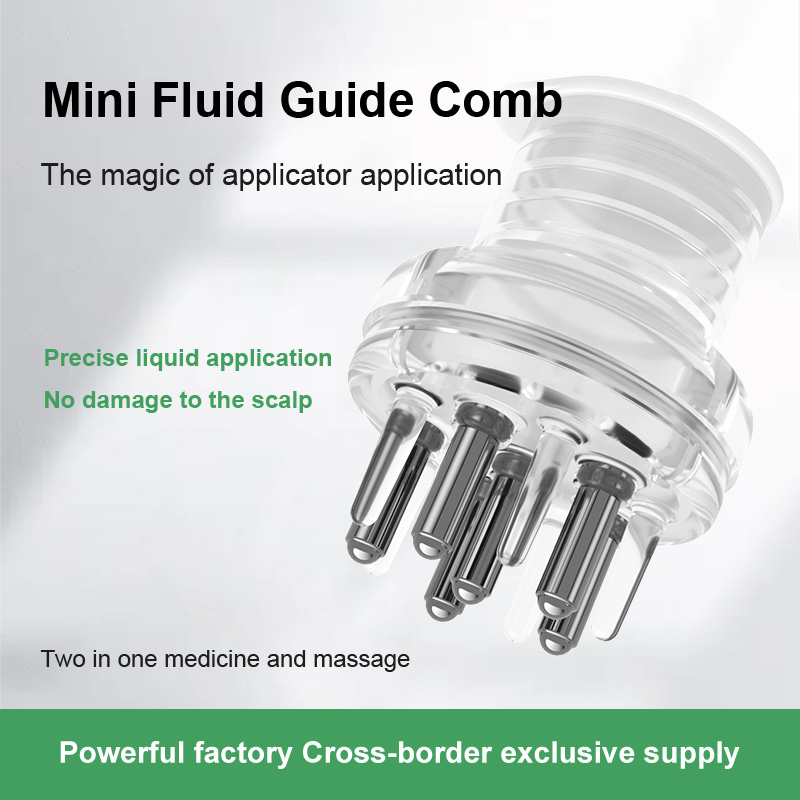Ensuring Safety and Efficiency: Key Considerations for Using the Mini Fluid Guide Comb
2024-02-29
Fluid handling processes are integral to numerous industries, from manufacturing to healthcare, where precision and reliability are paramount. As businesses embrace innovative solutions like the Mini Fluid Guide Comb to streamline these operations, it's crucial to prioritize safety considerations to protect personnel, equipment, and the environment. In this blog, we'll explore the safety features and considerations associated with the use of the Mini Fluid Guide Comb.
Built-In Safety Features
1. Leak Prevention: The Mini Fluid Guide Comb is designed to minimize the risk of leaks or spills during fluid handling operations. Its precise fluid control capabilities help prevent overflows or splashing, reducing the likelihood of accidents and ensuring a safe working environment.
2. Chemical Compatibility: The materials used in the construction of the Mini Fluid Guide Comb are carefully selected to withstand exposure to a wide range of fluids, including corrosive or hazardous chemicals. This ensures that the device remains structurally sound and functional, even when handling potentially dangerous substances.
3. Temperature Stability: The Mini Fluid Guide Comb maintains its performance and structural integrity across a broad range of operating temperatures, ensuring safe and reliable operation in diverse environmental conditions. This temperature stability minimizes the risk of overheating or material degradation, enhancing overall safety.
4. Ergonomic Design: The Mini Fluid Guide Comb features an ergonomic design that prioritizes user comfort and safety during installation, operation, and maintenance. Its compact size, lightweight construction, and intuitive controls minimize strain and fatigue, reducing the risk of ergonomic-related injuries.
Operator Training and Education
1. Training Programs: Employers should provide comprehensive training programs to ensure that personnel are adequately trained in the safe and proper use of the Mini Fluid Guide Comb. This includes familiarizing operators with its features, functionalities, and safety protocols, as well as providing hands-on training in installation, operation, and maintenance procedures.
2. Safety Guidelines: Establishing clear safety guidelines and procedures is essential for mitigating risks associated with the use of the Mini Fluid Guide Comb. This includes protocols for handling hazardous materials, emergency response procedures, and proper disposal methods to minimize environmental impact.
Risk Assessment and Hazard Mitigation
1. Risk Assessment: Conducting a thorough risk assessment is essential for identifying potential hazards associated with the use of the Mini Fluid Guide Comb and implementing appropriate control measures to mitigate these risks. This may involve assessing factors such as fluid properties, equipment compatibility, and operational conditions to ensure safe and compliant operation.
2. Hazard Mitigation: Implementing hazard mitigation measures, such as engineering controls, administrative controls, and personal protective equipment (PPE), can help minimize risks associated with fluid handling operations. This may include installing safety guards, implementing automated shut-off systems, and providing operators with appropriate PPE, such as gloves, goggles, or respirators, to protect against potential hazards.
Compliance with Regulations and Standards
1. Regulatory Compliance: Businesses must ensure compliance with relevant regulations and standards governing fluid handling operations to uphold safety and environmental standards. This may include adhering to regulations such as OSHA (Occupational Safety and Health Administration), EPA (Environmental Protection Agency), and NFPA (National Fire Protection Association) standards to mitigate risks and ensure workplace safety.
2. Certifications and Testing: The Mini Fluid Guide Comb should undergo rigorous testing and certification to validate its safety and performance characteristics. Certifications from recognized authorities demonstrate compliance with industry standards and provide assurance of quality and reliability.
Conclusion
In conclusion, safety considerations are paramount when using the Mini Fluid Guide Comb in fluid handling operations. By incorporating built-in safety features, providing comprehensive operator training and education, conducting risk assessments, and ensuring compliance with regulations and standards, businesses can minimize risks and create a safe and productive work environment. Prioritizing safety not only protects personnel, equipment, and the environment but also enhances operational efficiency and promotes sustainable business practices.



